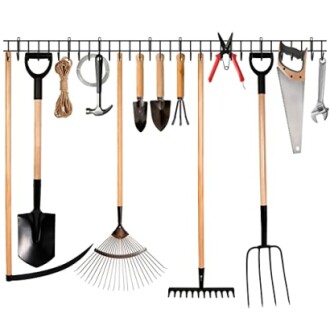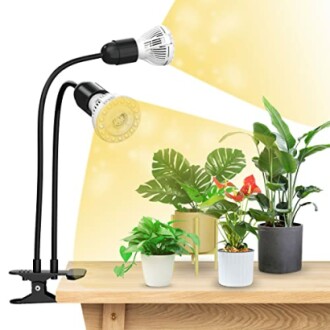
Vertical Gardening for Maximizing Light
Key Takeaways
- Maximize Sunlight: Position your vertical garden to take advantage of direct sunlight for optimal plant growth.
- Choose the Right Plants: Select plants that thrive in your local climate and light conditions.
- Space Optimization: Use vertical structures to make the most of limited balcony space.
- Maintenance is Key: Regularly check hydration and nutrient levels in your vertical garden.
Introduction
Creating a vertical garden on your balcony is a fantastic way to enhance your outdoor space while maximizing sunlight for your plants. With limited space in urban apartments, vertical gardening allows you to utilize walls, trellises, and shelves to grow a variety of plants. In this article, we'll guide you on how to set up your vertical garden effectively to ensure your plants receive optimal light for healthy growth.
Benefits of Vertical Gardening
- Utilizes small spaces efficiently.
- Improves air quality and enhances aesthetics.
- Encourages the growth of a diverse range of plants.
- Provides easy access to herbs and vegetables.
Maximizing Sunlight in Vertical Gardens
Sunlight is essential for any garden, but especially for vertical gardens where plants are stacked vertically. Here’s how to ensure your plants get the most light:
- Choose a Sunlit Location: Ensure your vertical garden is situated in a spot that receives plenty of sunlight during the day.
- Use Reflective Surfaces: Position mirrors or reflective panels near your garden to enhance light availability.
- Rotate Your Plants: Regularly rotate your plants within their vertical space to ensure all sides receive light.
- Select Appropriate Plants: Opt for plants known to thrive in lower light conditions if your balcony receives limited sun.
Suitable Plants for Vertical Gardens
Not all plants will grow well in a vertical arrangement or thrive in limited sunlight. Here’s a list of suitable plants:
| Plant Type | Light Requirement | Notes |
|---|---|---|
| Herbs (basil, mint, cilantro) | Partial to full sun | Great for culinary uses and easy to maintain. |
| Succulents | Full sun | Require minimal water and thrive in bright conditions. |
| Strawberries | Full sun | Produces delicious fruits with proper care. |
| Peppers | Full sun | Perfect for adding color and flavor to dishes. |
| Houseplants (pothos, spider plants) | Low to indirect light | Good for shaded areas but may need help with growth. |
Building Your Vertical Garden
To create a successful vertical garden that maximizes sunlight, consider the following steps:
- Choose Your Vertical Structure: Select walls, shelving, or trellises that fit your balcony space.
- Prepare the Soil: Use high-quality, well-draining soil that promotes healthy plant growth.
- Arrange Your Plants: Group plants with similar sunlight and watering needs together.
- Implement a Watering System: Consider drip irrigation or self-watering pots to maintain moisture levels.
- Monitor Growth: Regularly check your plants for signs of over or underexposure to sunlight.
Product Recommendations
To support your vertical garden, you might consider some useful tools and equipment:
Zacurter Garden Tool Rack
A perfect all-metal storage solution for organizing your tools, making your gardening experience smoother and more efficient.
More DetailsCare and Maintenance
Ongoing care is essential for a thriving vertical garden. Here are essential tips:
- Water Regularly: Ensure consistent watering based on the moisture levels of the soil.
- Fertilize: Use organic fertilizers to enhance plant growth.
- Prune Your Plants: Regular trimming encourages bushier growth and helps manage space.
- Monitor for Pests: Keep an eye out for any pests or diseases that could harm your plants.
Lighting Solutions for Vertical Gardening
If you lack natural light on your balcony, consider using grow lights. This can be an excellent addition to enhance plant growth:
SANSI 300W LED Grow Lights
This efficient grow light mimics natural sunlight, ideal for boosting photosynthesis and ensuring vibrant plant growth.
Explore NowConclusion
Vertical gardening offers an excellent solution for urban dwellers looking to create a green sanctuary within limited space. By maximizing sunlight, selecting appropriate plants, and maintaining diligent care, you can cultivate a thriving vertical garden that flourishes in your balcony oasis.
Additional Resources
For more in-depth information, check out these resources:

